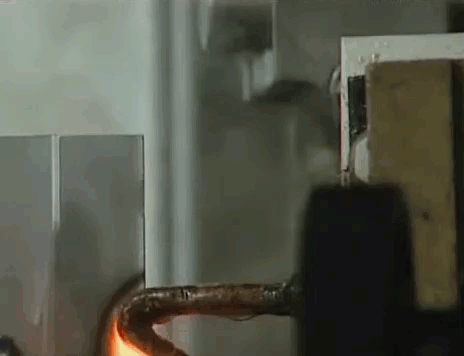Precision Tooling
Why should we care about using precision PB tools at all?
Why should we spend more money on them?

Well, as we defined before here....
The complete PB deformation process takes place in the small sheet area inside the V die and in contact with the upper punch
We also noticed that since 99% of the time we are air bending, so what really matters is the distance the ram travels, not only the force that it's applied.
The ram must reach an exact POINT in order to bend the sheet to a certain degree.
We determined using trigonometry (see HERE) that:
in a V=1" (25mm) for every .019" (0.5mm) the ram travels downwards, the sheet will bend 2° inwards
So...........What's the point in having CNC, servo-valves and linear encoders working perfectly with an accuracy of 0.1mm if we use tools that do not hold a precise measure in height, radius or angle?
Precision tools are essential to maintain accuracy
Let's see then how Precision Tools are made:
Induction Hardening

Planar tools might even be made within tolerance but not being induction hardened they will loose their shape with time and that's when problems begin.
Induction is obtained by creating an electromagnetic field around the tool, which being made in steel conducts the charge and gets heated.
This process is made piece by piece, without contact and applying a deeper and harder surface on the tools. Simply because the amount of martensite structures obtained with induction is far greater than what's obtained with flame hardening.
Further more an induction hardened tool goes under much less stress and it's deformation is not as much. This makes the tool easier to grind and bring within a tolerance of 0,01mm (.0004") in alignment.
Simply put an induction hardened tool will be stronger more precise in shape and will last longer.
Making our PB job easier



Grinding

Grinding is the final and most important part of any precision tool. No matter how hard a tool can become after hardening, it will always be distorted.
Tools longer than 1 meter (40") are simply too long to be properly brought back to shape.That's the reason for precision tools to be made in shorter lengths.
Every manufacturer then has it's own tolerance and quality checks. Some, like ROLLERI guarantee a tolerance within .0004".
This tolerance refers to the straightness of any tool and how one section will align to the next.